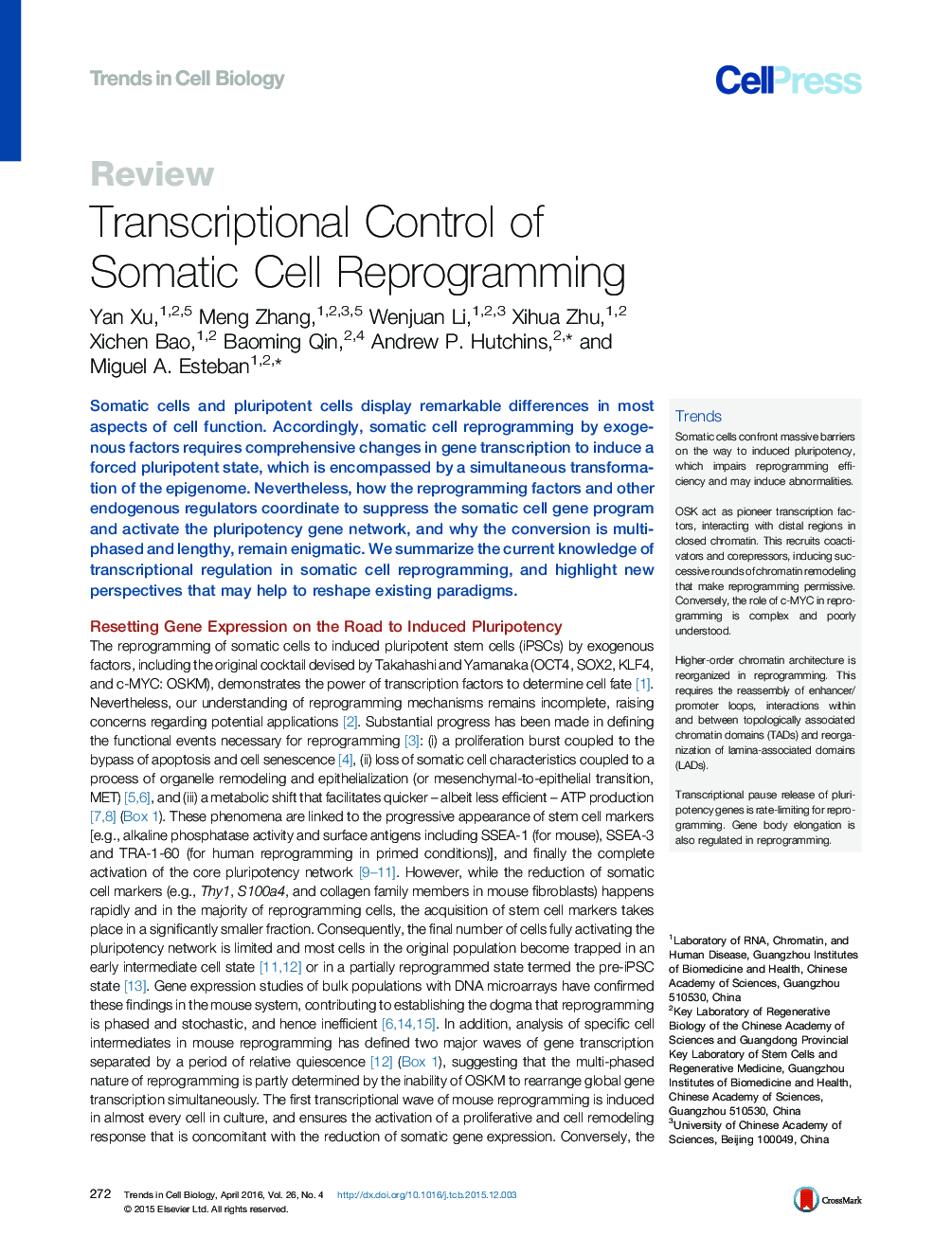| Article ID | Journal | Published Year | Pages | File Type |
|---|---|---|---|---|
| 2204269 | Trends in Cell Biology | 2016 | 17 Pages |
Somatic cells and pluripotent cells display remarkable differences in most aspects of cell function. Accordingly, somatic cell reprogramming by exogenous factors requires comprehensive changes in gene transcription to induce a forced pluripotent state, which is encompassed by a simultaneous transformation of the epigenome. Nevertheless, how the reprogramming factors and other endogenous regulators coordinate to suppress the somatic cell gene program and activate the pluripotency gene network, and why the conversion is multi-phased and lengthy, remain enigmatic. We summarize the current knowledge of transcriptional regulation in somatic cell reprogramming, and highlight new perspectives that may help to reshape existing paradigms.
TrendsSomatic cells confront massive barriers on the way to induced pluripotency, which impairs reprogramming efficiency and may induce abnormalities.OSK act as pioneer transcription factors, interacting with distal regions in closed chromatin. This recruits coactivators and corepressors, inducing successive rounds of chromatin remodeling that make reprogramming permissive. Conversely, the role of c-MYC in reprogramming is complex and poorly understood.Higher-order chromatin architecture is reorganized in reprogramming. This requires the reassembly of enhancer/promoter loops, interactions within and between topologically associated chromatin domains (TADs) and reorganization of lamina-associated domains (LADs).Transcriptional pause release of pluripotency genes is rate-limiting for reprogramming. Gene body elongation is also regulated in reprogramming.
